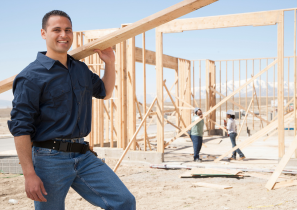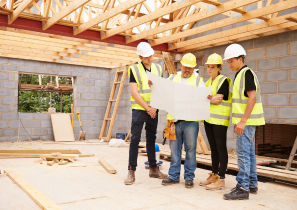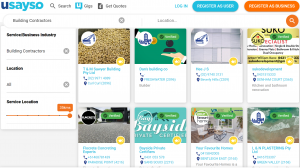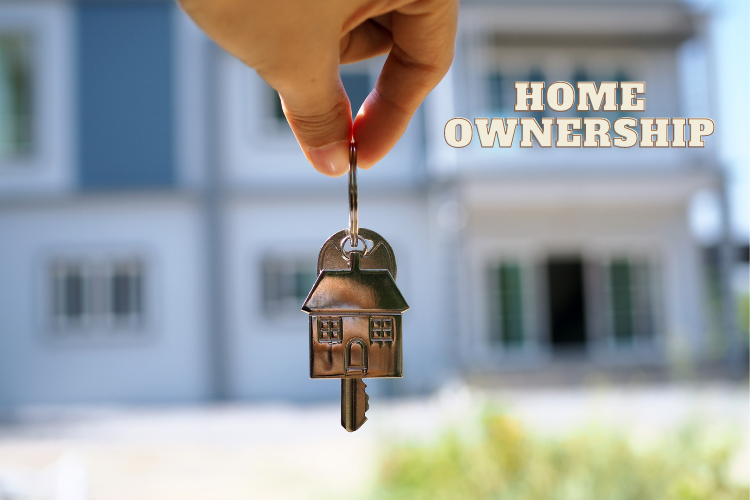Embarking on a journey to build your dream home can be both exciting and overwhelming. From selecting the perfect location to envisioning your ideal floor plan, there are numerous decisions to make throughout the process. However, the most significant choice you’ll need to make is finding the right builder to turn your dreams into reality.
In this step-by-step guide, we will walk you through the process of finding the ideal builder for your project. We’ll discuss the importance of research, how to evaluate a builder’s reputation, and the key factors to consider when making your decision. With the right builder by your side, you can ensure that your dream home is built to the highest standards and reflects your unique style and vision. So, if you’re ready to turn your dreams into a tangible reality, let’s get started on finding the perfect builder to bring your vision to life.
The Importance of Finding the Right Builder

Building your dream home is a significant investment, and with the right builder, you can make it a truly rewarding experience. A skilled and reputable builder will not only bring your vision to life but also ensure that the construction process is smooth and hassle-free. They will have the expertise and knowledge to navigate any challenges that may arise along the way. One of the primary reasons why finding the right builder is crucial is the quality of workmanship. A skilled builder will have a track record of delivering high-quality projects, ensuring that your dream home is built to last. They will use premium materials, employ skilled craftsmen, and adhere to strict construction standards to create a home that exceeds your expectations. Additionally, a reputable builder will have established relationships with suppliers and subcontractors, enabling them to source the best materials and services at competitive prices. This can save you both time and money during the construction process.
Factors to Consider When Finding the Right Builder

When it comes to choosing the right builder for your project, there are several key factors to consider. These factors will help you evaluate each builder’s suitability and determine if they are the right fit for your specific needs and requirements. One of the first things to consider is the builder’s experience and expertise. Look for builders who have a proven track record of successfully completing projects similar to yours. An experienced builder will have the knowledge and skills needed to handle the complexities of your project, ensuring that it is completed to the highest standards. Another important factor to consider is the builder’s reputation in the industry. Look for builders who have positive reviews and testimonials from previous clients. You can also check with local building associations and regulatory bodies to ensure that the builder has a good standing and has not been involved in any legal disputes or complaints. It’s also essential to consider the builder’s communication style and ability to understand your vision. Building a home is a collaborative process, and you want to work with a builder who listens to your ideas, provides valuable input, and keeps you informed throughout the construction process. Good communication is key to a successful and stress-free building experience.
Researching and Shortlisting Potential Builders

Now that you understand the importance of finding the right builder and the factors to consider, it’s time to start researching and shortlisting potential builders for your project. Begin by asking friends, family, and neighbours for recommendations. Personal referrals are often a great way to find reputable builders who have a track record of delivering quality work. You can also use online resources such as builder directories and review websites to find builders in your area. Look for builders who specialise in the type of project you have in mind, whether it’s a custom home, a renovation, or an addition. Narrow down your list to a few builders who seem like a good fit based on their experience, reputation, and portfolio. Once you have a shortlist of potential builders, it’s time to dig deeper and evaluate their work further.
Evaluating the Builder’s Portfolio and Past Projects
A builder’s portfolio and past projects are an excellent way to assess their workmanship and style. Ask each builder for their portfolio, which should include photos of completed projects, floor plans, and any awards or recognition they have received. Take the time to review each builder’s portfolio and evaluate their ability to deliver the type of home you envision. Look for attention to detail, craftsmanship, and design elements that align with your taste and preferences. Pay close attention to the quality of finishes, materials used, and overall aesthetic appeal. If possible, visit some of the builder’s past projects in person. This will give you a better sense of the quality of their work and allow you to see firsthand how their homes stand the test of time. You can also speak with homeowners who have worked with the builder to get their feedback and insights.
Checking References and Testimonials from Previous Clients

In addition to evaluating a builder’s portfolio, it’s essential to check references and testimonials from their previous clients. Request a list of references from each builder and reach out to these homeowners to gather feedback about their experience working with the builder. Ask the references about their overall satisfaction with the builder, the quality of workmanship, adherence to timelines, and communication throughout the project. Inquire about any challenges or issues that arose during the construction process and how the builder handled them. This will give you valuable insights into the builder’s professionalism, problem-solving skills, and commitment to customer satisfaction. You can also search for online reviews and testimonials from previous clients. While online reviews should be taken with a grain of salt, they can provide additional perspectives and help you gauge the overall reputation of the builder. Finally, you should check for current llicencing and qualifying certificates for your state.
Understanding the Builder’s Expertise and Specialisation

Not all builders are created equal, and it’s essential to find a builder who has the expertise and specialisation required for your specific project. Some builders specialise in custom homes, while others may excel in renovations or green building practices. When evaluating potential builders, ask about their areas of expertise and whether they have experience in projects similar to yours. A builder who understands the unique challenges and requirements of your project will be better equipped to deliver the results you desire. It’s also important to inquire about the builder’s relationships with architects, designers, and subcontractors. Building a home involves collaboration with various professionals, and a builder who has strong relationships with trusted industry partners can streamline the construction process and ensure a seamless integration of all elements.
Meeting with the Builder and Discussing Your Project
Once you have narrowed down your list to a few potential builders, it’s time to meet with each one to discuss your project in detail. Schedule face-to-face meetings or virtual consultations to get a sense of each builder’s communication style, professionalism, and understanding of your vision. During these meetings, share your ideas and requirements with the builder and listen to their suggestions and recommendations. A good builder will ask thoughtful questions, offer valuable insights, and provide suggestions to enhance your project. Pay attention to how each builder communicates and whether they take the time to understand your goals and preferences. Building a home is a collaborative effort, and you want to work with a builder who values your input and is committed to bringing your vision to life.
Obtaining Detailed Quotes and Contracts
After meeting with each builder and discussing your project, it’s time to obtain detailed quotes and contracts. Request a comprehensive quote from each builder that outlines the cost of materials, labour, and any other expenses associated with the project. Review each quote carefully and ensure that all aspects of the project are included. Pay attention to any allowances for materials or finishes, as these can significantly impact the final cost. It’s also essential to review the payment schedule and any terms and conditions outlined in the contract. Before signing any contracts, it’s advisable to have a lawyer review the documents to ensure that your interests are protected. A thorough and legally sound contract will provide clarity and minimise the risk of disputes or misunderstandings throughout the construction process.
Monitoring the Construction Process and Communication with the Builder
Once construction begins, it’s important to maintain open lines of communication with the builder and monitor the progress of the project. Regularly scheduled site visits will allow you to stay informed about the construction process, address any concerns promptly, and make any necessary adjustments. Maintaining a collaborative relationship with the builder throughout the construction process is key to a successful outcome. Regular communication ensures that everyone is on the same page, and any changes or modifications can be discussed and implemented in a timely manner. Remember to trust the expertise of your builder and rely on their guidance when necessary. A skilled builder will have the knowledge and experience to navigate any challenges that may arise and will keep your best interests in mind throughout the construction process.
Types of Contracts and the Incentive to Keep Builders on Top:
When embarking on a construction project, selecting the right type of contract is paramount to its success. One common contract type is the Cost Plus contract, where the client agrees to pay the builder for the actual cost of construction plus a predetermined fee. This approach provides transparency and flexibility, especially in projects with evolving designs or uncertain scopes. However, maintaining oversight and ensuring efficiency under a Cost Plus contract can be challenging.
Here’s why:
Transparency in Costs: Cost Plus contracts necessitate transparency in accounting to verify the actual costs incurred. Without proper oversight, builders might inflate costs or mismanage resources, leading to financial discrepancies.
Incentive Alignment: While Cost Plus contracts offer builders a guaranteed fee on top of costs, there’s a risk of complacency if not properly managed. Builders might prioritise maximising costs to increase their fee, rather than emphasising efficiency and cost-saving measures.
Quality Control: With builders directly managing subcontractors and material procurement under a Cost Plus contract, there’s a need for stringent quality control measures. Without oversight, builders might prioritise cost over quality, compromising the integrity of the project.
To mitigate these risks and ensure optimal performance under a Cost Plus contract, clients must maintain active oversight and incentivise builders accordingly. Implementing robust project management practices, such as regular progress meetings, financial audits, and quality inspections, can help keep builders accountable and ensure adherence to project timelines and budgetary constraints.
Furthermore, clients can align incentives by incorporating performance-based bonuses tied to key project milestones, such as meeting deadlines, adhering to budgetary constraints, and achieving predefined quality standards. By fostering a collaborative environment and incentivising performance, clients can maximise the potential benefits of a Cost Plus contract while minimising risks associated with cost overruns and quality deficiencies.
Comparing with Fixed Cost Contracts:
In contrast to Cost Plus contracts, Fixed Cost contracts entail clients agreeing to a predetermined total cost for the entire project upfront. While this provides cost certainty and simplifies budgeting, builders may face pressure to cut corners to maintain profit margins. As a result, maintaining quality and adherence to timelines becomes paramount, requiring rigorous monitoring and incentive alignment similar to that needed in Cost Plus contracts.
In both contract types, clients must implement robust project management practices to ensure optimal performance and minimise risks. This includes regular progress meetings, financial audits, and quality inspections to keep builders accountable and ensure that projects are completed to the desired standards within budget and on schedule. Additionally, clients can align incentives by incorporating performance-based bonuses tied to key project milestones, such as meeting deadlines, staying within budget, and achieving predefined quality benchmarks. By fostering a collaborative environment and incentivising performance, clients can maximise the benefits of either contract type while mitigating associated risks.
Conclusion: Finding the Right Builder
By following this step-by-step guide and taking the time to find the right builder for your project, you can ensure that your dream home becomes a reality. The process of building a home can be complex and challenging, but with the right builder by your side, it can also be an incredibly rewarding experience. Investing time and effort into researching, evaluating, and selecting the ideal builder will pay off in the long run. A skilled and reputable builder will deliver a high-quality home that reflects your unique style and vision. They will handle the construction process with professionalism and ensure that every detail is taken care of.
So, take the first step towards building your dreams and start the journey of finding the perfect builder. With their expertise and your vision, together, you can create a home that exceeds your expectations and brings you joy for years to come.










